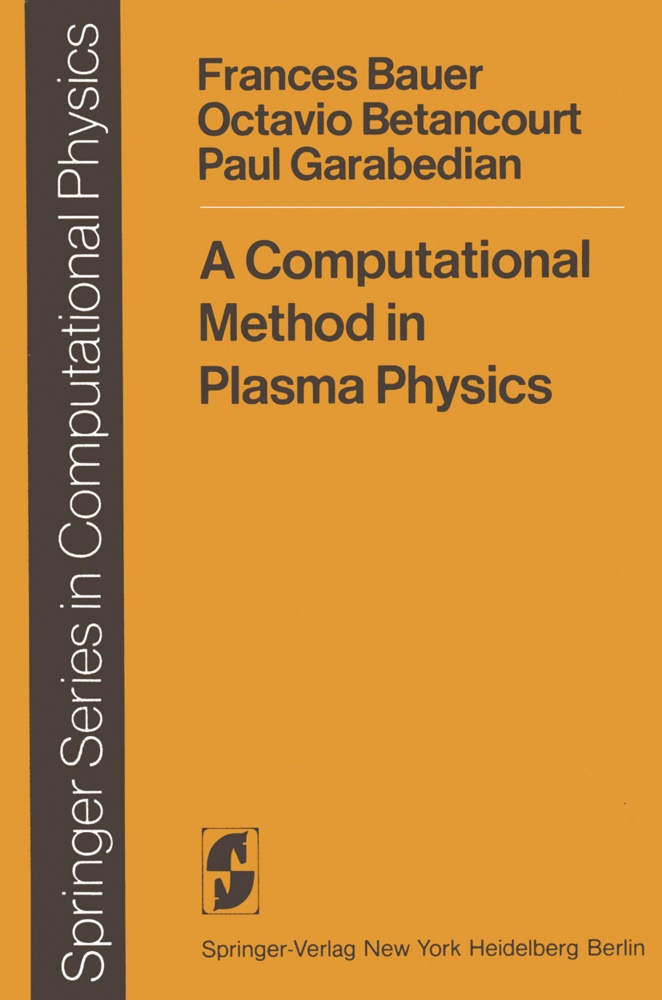Read more
In this book, we report on research in methods of computational magneto hydrodynamics supported by the United States Department of Energy under Contract EY-76-C-02-3077 with New York University. The work has re sulted in a computer code for mathematical analysis of the equilibrium and stability of a plasma in three dimensions with toroidal geometry but no sym metry. The code is listed in the final chapter. Versions of it have been used for the design of experiments at the Los Alamos Scientific Laboratory and the Max Planck Institute for Plasma Physics in Garching. We are grateful to Daniel Barnes, Jeremiah Brackbill, Harold Grad, William Grossmann, Abraham Kadish, Peter Lax, Guthrie Miller, Arnulf Schliiter, and Harold Weitzner for many useful discussions of the theory. We are especially indebted to Franz Herrnegger for theoretical and pedagogical comments. Constance Engle has provided outstanding assistance with the typescript. We take pleasure in acknowledging the help of the staff of the Courant Mathematics and Com puting Laboratory at New York University. In particular we should like to express our thanks to Max Goldstein, Kevin McAuliffe, Terry Moore, Toshi Nagano and Tsun Tam. Frances Bauer New York Octavio Betancourt September 1978 Paul Garabedian v Contents Chapter 1. Introduction 1 1. 1 Formulation of the Problem 1 1. 2 Discussion of Results 2 Chapter 2. The Variational Principle 4 4 2. 1 The Magnetostatic Equations 6 2. 2 Flux Constraints in the Plasma . 7 2. 3 The Ergodic Constraint .
List of contents
1. Introduction.- 1.1 Formulation of the Problem.- 1.2 Discussion of Results.- 2. The Variational Principle.- 2.1 The Magnetostatic Equations.- 2.2 Flux Constraints in the Plasma.- 2.3 The Ergodic Constraint.- 2.4 Coordinate System in the Plasma.- 2.5 First Variation of the Potential Energy.- 2.6 Vacuum Region and Force-Free Fields.- 2.7 Variation of the Vacuum Field.- 2.8 Variation of the Free Boundary.- 2.9 Coordinate System in the Vacuum.- 2.10 Accelerated Paths of Steepest Descent.- 2.11 Determination of the Acceleration Coefficients.- 3. The Discrete Equations.- 3.1 The Numerical Method.- 3.2 Difference Equations for the Plasma Region.- 3.3 Difference Equations for the Vacuum Region.- 3.4 Iterative Scheme for the Plasma Region.- 3.5 Iterative Scheme for the Vacuum Region.- 3.6 Iterative Scheme for the Free Boundary.- 3.7 Remarks about the Method.- 3.8 Iterative Schemes for Elliptic Equations.- 4. Description of the Computer Code.- 4.1 Introduction.- 4.2 Input Data.- 4.3 Printed Output.- 4.4 Glossary.- 5. Applications.- 5.1 Historical Development of the Code.- 5.2 Comparison with Exact Solutions.- 5.3 Unstable High ? Stellarator Equilibria.- 5.4 Triangular Cross Sections.- 5.5 High ? Tokamaks.- 5.6 Discussion.- References.- Listing of the Code with Comment Cards.- 1. Output from a Sample Run.- 2. Fortran Listing.

